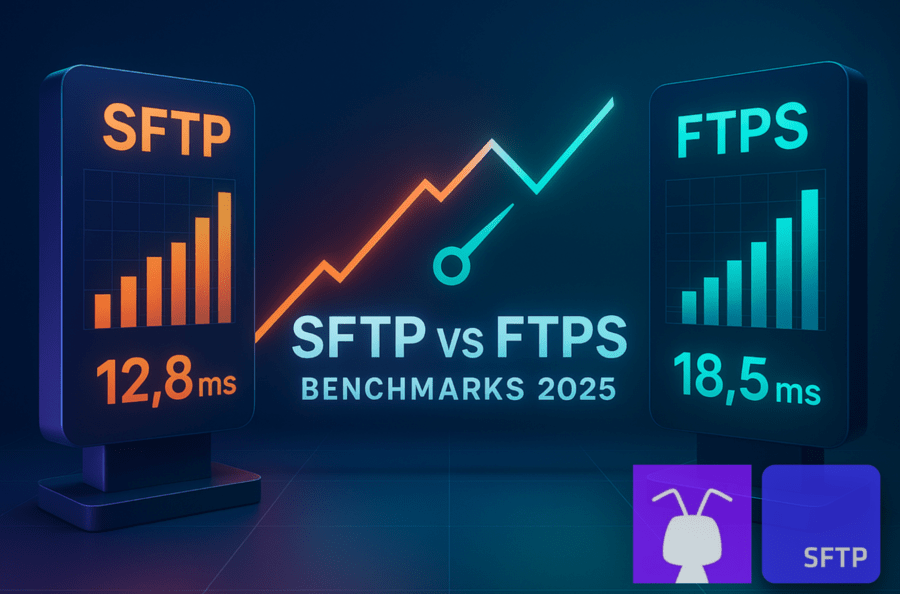Speed tests are easy. Decision-making is hard. Our new SFTP vs FTPS Benchmarks whitepaper was written for teams who care about the second part. Instead of naming a winner, it helps you understand why one protocol outperforms the other under specific conditions and how factors like file size, latency, and client behavior quietly decide the outcome.
It’s not another “which is faster” chart. It’s a field guide for engineers who need to:
- Choose the right protocol for real workloads and systems, not lab conditions
- Optimize automation and sync jobs based on file size and concurrency
- Balance performance with security and operational simplicity
- Choose your client based on your unique workload and habits
If you’re building or tuning data transfer pipelines, this will help you make grounded, defensible choices that save time and bandwidth without compromising security. Don’t make a decision on transfer protocols or transfer clients until you’ve read it!
Read the summary here: SFTP vs. FTPS Benchmarks
Download the study here: SFTP vs. FTPS Whitepaper
Our new whitepaper on SFTP vs FTPS benchmarks that goes beyond speed tests. It shows how environment, file size, and tool behavior influence performance, offering clarity for real-world decision-making; helping teams choose the right protocol, optimize workflows, and build faster, more reliable transfer systems.
Frequently asked questions
Is SFTP faster than FTPS in real-world transfers?
Not always. The benchmarks showed that FTPS was faster for larger files in curl downloads, while SFTP handled smaller files and uploads more efficiently.
Why does FTPS seem faster for big files?
FTPS performed better once file sizes exceeded 1 MB in the benchmark tests, especially in low-latency environments.
Does SFTP work better when transferring lots of small files?
Yes. SFTP kept steadier performance with high file counts and smaller file sizes, particularly when tested with LFTP.
How does network latency affect FTPS and SFTP speed?
Latency reduced FTPS performance more noticeably. SFTP stayed more consistent when transfers ran across distant regions.
Can changing the client software make SFTP faster?
Yes. In the tests, using LFTP improved SFTP speed and sometimes reversed FTPS’s advantage.
Which protocol is more reliable for uploads?
SFTP was more consistent in uploads, particularly with LFTP. FTPS showed better results only for larger files in curl uploads.
Is FTPS still worth using if SFTP performs well?
Yes. FTPS remains useful when existing infrastructure or compliance rules require TLS-based encryption, though it may not always be faster.
What did the benchmarks reveal overall?
That there’s no universal winner. SFTP and FTPS each perform better under different conditions depending on file size, latency, and client behavior.

